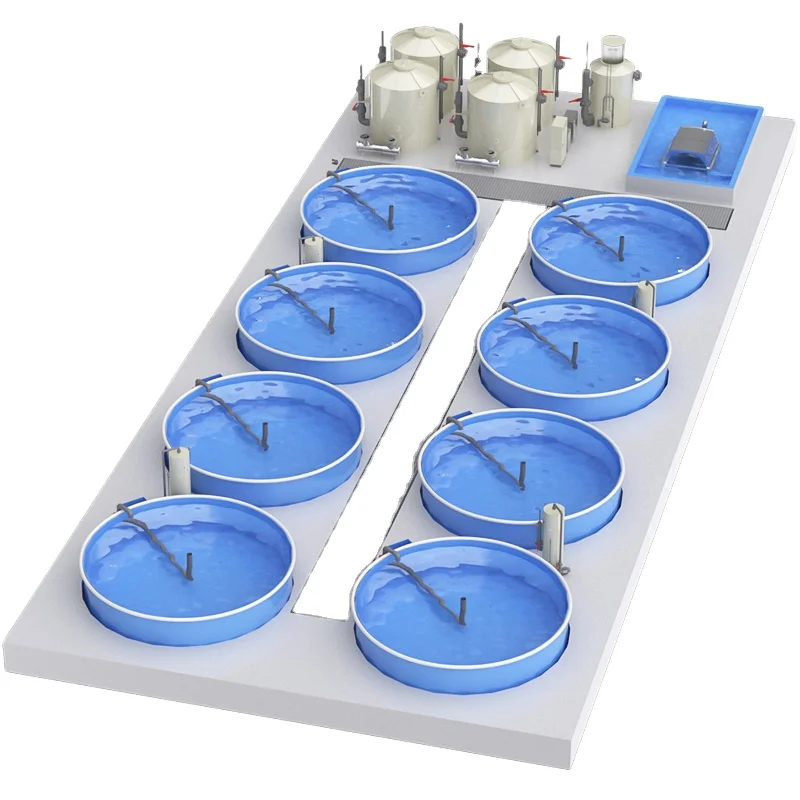Recirculating aquaculture systems — such as those provided by eWater — are taking off in commercial farming. They are also suitable for culture of fish and other aquatic animals. They provide benefits that conventional farming techniques aren’t able to rival, and are an excellent option for companies looking to update their operations.
Advantages of Recirculating Aquaculture Systems in Commercial Production
There are several advantages of recirculating aquaculture systems for commercial production. Water savings is a big plus. They recycle and reuse water, so there is less reliance on new supplies of fresh water. This is particularly important in drought-stricken areas, or where water is expensive to procure. Furthermore, recirculation systems allow for better water quality management. Water can be filtered and monitored continually, enabling a healthful environment for their aquatic animals. As a result, growth rates are higher and animal mortality lower. Moreover, with the recirculating aquaculture systems, it is possible to monitor feeding and waste. Farmers can adjust when the animals are fed and track waste levels to keep the system operating effectively. On the whole, these systems are more environmentally sustainable in commercial aquaculture.
What makes recirculating aquaculture systems different than traditional farm and farming?
Recirculation aquaculture has some significant differences with normal farming. One of the important differences is the capacity to practice farming in controlled conditions. In recirculating systems, farmers are able to regulate the temperature, oxygen levels, and other conditions to provide the ideal environment of their aquatic creatures. Such management level leads to the high growth rates and quality products. The other advantage is that it reduces the chances of a disease epidemic. By giving due consideration to the quality of water, and the environment can be kept clean, pips can help keep the disease spread between their animals. The open-water system of mobile fish farms reduces the chances of being affected by diseases as compared to traditional methods. Besides, RAS has a higher stocking density. The smaller space can also be used to fit more animals by farmers and hence this is efficient in maximizing production. They are more sustainable, environmentally – they produce less waste and use less resources than traditional farming systems. In conclusion, with its high technology and sustainable features, recirculating aquaculture systems are the best and modern alternative to commercial farms.
Are Recirculating Aquaculture Systems an Investment Thrust for Wholesaler?
Recirculating aquaculture systems (RAS) are a must to consider to wholesale buyers that invest in aquaculture. This type of systems is fruitful, environmentally friendly and it therefore makes a smart sense using them as a commercial agribusiness. RAS promote recycling of water, efficiency and waste minimization. That implies fewer out of pocket expenses and fewer damages towards the environment. Moreover, RAS provide the best environments under which fish grow effectively hence healthier and more reliable harvests. With the increase in consumption of seafood, wholesale buyers must invest in RAS in order to satisfy the needs of the market and be profitable.
Getting the Most of RAS Technology - Optimization of RAS Efficiency and The Benefits It Offers for Aquaponics System
Wholesale Buyers: The high performance and productivity of the individuals in the wholesale industry makes them to be keen to various important aspects when utilizing recirculating sustainable aquaculture. To begin with, you must possess the correct and quality equipments and technology to deliver your best performance ever. There is also a need to have constant systems of servicing and monitoring to ensure that there are no issues that may result in the decrease of output. Proper stocking is irritating and feed control to achieve maximum fish growth and harvesting is crucial. Besides, the fish can be maintained in well-balanced and conducive conditions through observance of best-accepted practices in water quality management such as filtration and aeration. The wholesale purchasers who employ such strategies can induce the best out of their RAS and the labor success in their continued commercial farming.
Where to Purchase the Top-Rated Recirculating Aquaculture Systems for Commercial Use
To wholesale customers, eWater offers the final option in securing a recirculating aquaculture system to use in commercial farming. eWater offers quality system of RAS that is founded on the basis of efficiency, sustainability and easy utilization. The systems offer one of the most superior technology available in the market and can be customized to suit different farming requirements. eWater also offers excellent customer care and maintenance services to assist to ensure that customers are successful. Alternatives chosen by wholesale purchasers whose seriousness to their targets is manifested by aggressive acquisition of a robust brand that has worked in the industry, in eWater.
Table of Contents
- Advantages of Recirculating Aquaculture Systems in Commercial Production
- What makes recirculating aquaculture systems different than traditional farm and farming?
- Are Recirculating Aquaculture Systems an Investment Thrust for Wholesaler?
- Getting the Most of RAS Technology - Optimization of RAS Efficiency and The Benefits It Offers for Aquaponics System
- Where to Purchase the Top-Rated Recirculating Aquaculture Systems for Commercial Use

 EN
EN
 AR
AR
 BG
BG
 HR
HR
 CS
CS
 DA
DA
 NL
NL
 FI
FI
 FR
FR
 DE
DE
 EL
EL
 HI
HI
 IT
IT
 JA
JA
 KO
KO
 NO
NO
 PL
PL
 PT
PT
 RO
RO
 RU
RU
 ES
ES
 SV
SV
 TL
TL
 IW
IW
 ID
ID
 SR
SR
 UK
UK
 VI
VI
 HU
HU
 TH
TH
 TR
TR
 AF
AF
 BN
BN
 LO
LO
 LA
LA
 MY
MY
 UZ
UZ

